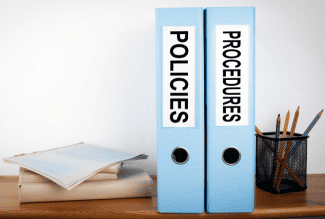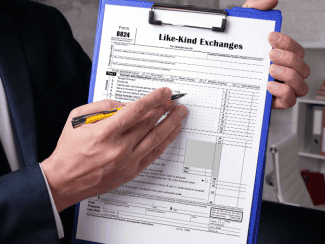When you’re clearing out the areas where you stored winter supplies, such as snow shovels, ice melt or a snow plow or blower, make a note of their condition. “You can take advantage of off-season pricing in the same way that you buy your winter coat in the summer,” suggested Rhodes. Supplies like pet-friendly ice melt need to be ordered early before they sell out. You should also procure freeze-warning signage early. If you wait too long, it will have to be custom printed and might not be ready in time for the season.
In the spring, when you’re opening the pool, think about what you can do in the winter to make it easier 12 months from now. “We’re talking about pool furniture, the plaster surface or the concrete decking itself and supplies like swimming pool chemicals and cleaning equipment,” said Rhodes.
“Depending on where you operate, winterization might be a longer process than it is here in coastal Virginia, where we have mild winters, but I prefer to start a few weeks ahead of the first frost,” noted Donje Putnam, an experienced regional property manager and currently the director of marketing and training at Senex Law, PC. “By using a Frost Map, you can find the date in your area when you can expect the first frost, and plan ahead accordingly.”
Lines of communication
Aside from storms, there are other winter pitfalls to prepare for. Many problems can be mitigated with solid communication practices. According to Rhodes, employee turnover rates for the industry are 45 percent to 50 percent. “Not all the people winterizing the property one year will be there the following year.” Record keeping is key.
RPM Living compiles their winterizing procedures in a checklist, which starts with proactive actions like ensuring contact lists and emergency shut-off maps are up to date. It goes into detailed cold weather preparations for pool areas, irrigation, riser rooms and much more. “Preparation should always be ongoing because if you’re waiting for the season, that’s the worst time to find something faulty or not working,” recommended Tami Fossum, the company’s vice president of operations. Scott Haney, RPM’s facilities director has monthly meetings with his service team and starts talking about winter prep in September.
Paying Too Much For Insurance?
Get a FREE quote to insure your rental properties for less.
Expect the unexpected
Regular, year-round inspections of the property will reveal problem areas that can be addressed before winter arrives. Are there trees touching buildings that should be trimmed back before winter? Are there street lights or building lights that, when trees are frozen and wet and they fall over, could block or obscure lighting and make it unsafe for residents? “Consult your landscaper. They will be a good resource,” noted Rhodes. Also, before snow is expected, mark the location of curbs and fire hydrants.
For properties with a compactor in the dumpster area, preventive maintenance needs to be done in the fall. “If water gets in the hydraulics, it will wreak havoc when the temperature freezes,” said Rhodes. Stairways that will be exposed to ice melt should be inspected for potential repair needs before the winter.
The building inspection should also include a check of gutters and downspouts to make sure drainage is clear. A clogged gutter can cause melting snow to run over and create icicles or—even worse—pool into icy patches that are fall hazards.
“Inside the property, you’ll want to oil and service any motors that run your boilers and inspect duct work if you haven’t in a while,” adds Putnam. “You may need to bleed radiators. And of course, if you have forced air heat, check the filter.”
According to Putnam, entry doors in common areas should be inspected not only for leaking air and worn weather strips but also to make sure floor mats are in good shape. In addition to planning snow removal, Putnam recommends creating a winter plan map. Sometimes it’s hard to see the places that will be dangerous, but if you mark them on your winter plan map, you’ll know where they are next year.
Extreme cold snaps can cause sprinkler pipes to break inside walls. “I’ve found that using remote control thermostats in attics and other voids where sprinkler (or any pipes) are located is an inexpensive way for your maintenance supervisor to monitor the temperature during severe weather,” said Putnam.
Haney stresses the importance of checking attics to make sure all pipes are insulated. “When exposed pipes freeze and break, the claim for the damage can be much more than the cost of the insulation,” advised Haney. Also watch out for the insulation on sprinkler systems. Some operators put heat strips on sprinkler pipes in the attic to prevent freezing. Exterior water hose bib areas can be problematic too, according to Fossum. If they are not turned on to drip or they do not have insulation covers, they can flood downstairs units.
Involving residents
Residents can also play an important part in a successful winterization by adhering to policies and procedures communicated by management teams. “We send a letter to residents when there’s a freeze warning in the market,” said Fossum. “We ask them to turn on their faucets to just a trickle. Moving water is less likely to freeze.” Some operators also put up signage near the entrance of the property to let residents know when they need to drip their faucets.
“We ask residents to keep their thermostats set no lower than 55,” adds Fossum. They also need to open the kitchen and bathroom cabinets, especially if the water wall where the pipes come in is an exterior wall or up against dirt. Opened cabinet doors let the warmer air circulate around those plumbing pipes.
In most leases residents have the responsibility to keep their apartment at a reasonable temperature to prevent pipes from freezing. However, according to Putnam, the holidays are particularly dangerous because residents leave and turn off their heat. It’s a good idea to send out multiple reminders for them to keep the heat on even if they are away. These guidelines also apply to vacants. The National Apartment Association created a checklist that drills down on what to do for vacants.
Hampton Roads has a large military population who are often deployed for long periods of time. “We try to emphasize to our residents to let us know when they are out of town for more than a few days. Two of my major pipe bursts were occupied apartments in which the military member was deployed,” said Putnam.
Whatever preparation you do, you can’t predict the future, according to Rhodes. “If you get in three-and-a-half pallets of ice melt, it never snows. When you get one bag of ice melt, it’s a blizzard for three months.” Either way, it’s a good idea to foster relationships with a remediation contractor before winter happens. Just in case.
Source: Multihousing News
















 Accessibility
Accessibility